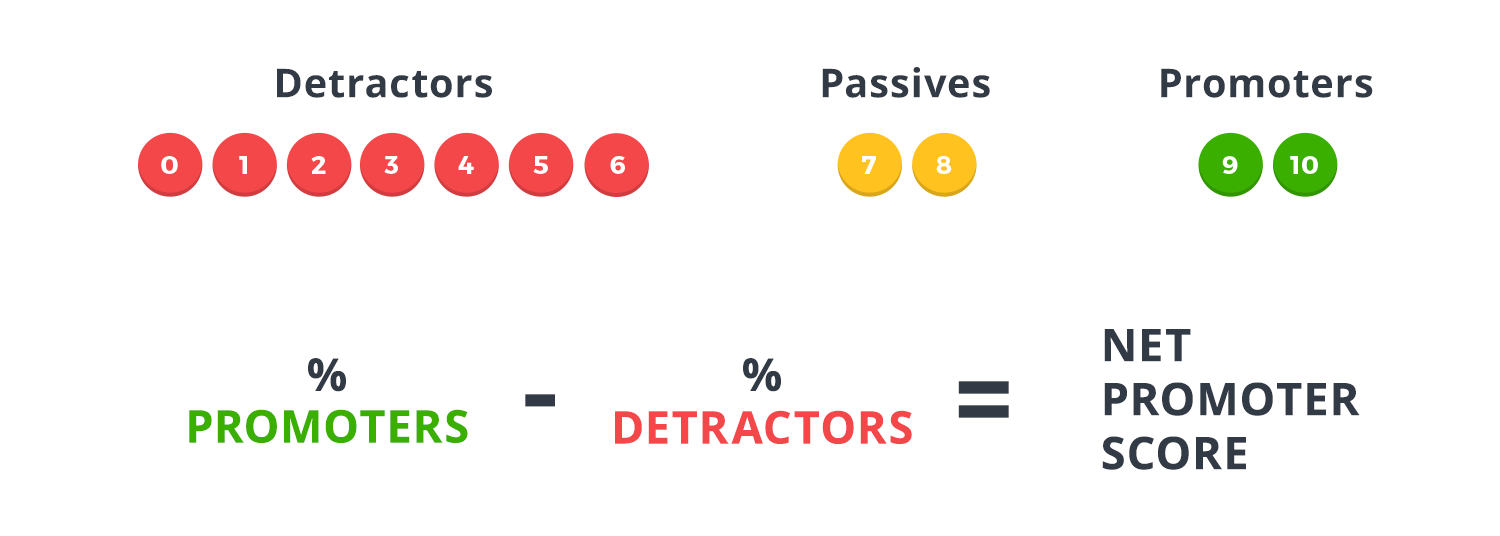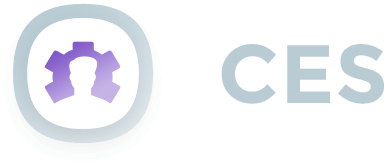At a job interview for customer support manager, I was asked what one number I would use to measure the quality of customer support. I paused. Could customer support really be boiled down to one out of so many customer service metrics? If so, which one?
Our main goal in support is to help customers. We want to turn unhappy, confused customers into happy, successful customers. Measuring customer happiness is the purest method of knowing if our support team is succeeding. And the best way to measure customer happiness is to ask the customer.
Three Common Customer Service Metrics
There’s three common customer service metrics used by support teams today: Customer Satisfaction, Net Promoter Score and Customer Effort Score. All three involve surveying customers to get their opinion, but they ask different questions and offer different results. There’s lots of articles out there describing how to use each, but how do you decide between them? How you do know which customer service metrics are right for you?
In this post, we look at the advantages of each to help you choose which customer service metrics to deploy at your company.
Customer Satisfaction (CSAT)
CSAT is the time tested method of measuring customer service. While it’s been around forever (it’s earliest format was the ratings index for radio shows in the 1940s), it’s definitely not going out of style. And that’s probably because it’s easy to set up, easy to reply to and provides a great overview of the customer’s happiness levels.
CSAT is measured by asking customers how they felt about the most recent interaction with the company. It can be phrased a variety of ways:
- How satisfied are you with the service you received today?
- How nice was my reply?
- Did this answer your question?
- How would you rate your interaction with customer support?
The customer chooses their response on a scale from bad (or not satisfied) to good (or satisfied). Help desk CSAT surveys vary from just two options (good and bad) all the way up to a scale out of 10. Most surveys also allow a follow up comment for the customer to explain their rating further.
To calculate the CSAT score, subtract the % of customers who were unhappy from 100%. If you’re using a binary system, this is simple enough to calculate. If you’re using scales with three or five options, you’ll need to decide what a “satisfied” reply is to your team. For example, if customers answer on a scale from 1-5, you might consider any customers answering a 4 or 5 “satisfied”. Your CSAT score would then be the % of customers who responded 4 or higher. Nicereply surveys use a scale of 10 stars, and we display scores as a value out of 10.
 Benefits of Customer Satisfaction
Benefits of Customer Satisfaction
Customer satisfaction is easy to setup. It’s often only one click to set up. It’s also simple for both customer and company to understand. There’s no room for misinterpretation. Anyone who sees a 80% CSAT score knows what that means. 8/10 customers were satisfied.
CSAT also has the advantage of being useful both for individual replies and complete interactions. You can attach a CSAT survey to every email, or only send out the survey when the conversation is marked complete. By allowing customers to give feedback on every reply, it’s easy to spot when a conversation is going wrong. With other survey methods, you won’t receive feedback until everything is already wrapped up – meaning you miss the opportunity to recover earlier on.
 Disadvantages of Customer Satisfaction
Disadvantages of Customer Satisfaction
CSAT may give you an overview of how your support team is doing, but it’s actually a very low predictor of loyalty. That means that customers who are “satisfied” on their last CSAT survey, still often end up churning, or cancelling. While they might be happy with the service they received, it doesn’t make up for needing to contact support in the first place.
Another disadvantage of CSAT is that it starts to become less useful as your score approaches 100%. When you start measuring CSAT it’s easy to see where improvements can be made by looking at trends and customer comments. But when you’ve grabbed all the low hanging fruit and CSAT stays around 95% month after month, it’s less useful.
 Who should use Customer Satisfaction?
Who should use Customer Satisfaction?
CSAT is a great first metric for support teams. It gives quick results, is easy to implement and simple to understand. As you grow and improve, you might want to look at moving from CSAT to other customer service metrics to get more actionable responses.
Net Promoter Score (NPS)
Net Promoter Score was created by Fred Reichheld at Bain & Company in 2003. The program was designed to find the best metric to predict customer loyalty or churn. Initially, they tested a ton of questions to see which best correlated between customers’ answers and their behaviour. Reichheld found that the following question was the best at predicting a customer’s future behaviour:
“What is the likelihood that you would recommend Company X to a friend or colleague?”
No other question proved to be as efficient. High NPS scores correlate strongly with repurchases, referrals, and other activities that drive companies towards growth, while low NPS scores correlate with churn, poor reviews and downsizing.
To measure NPS, customers are asked the above question and they respond on a scale from 1 (very unlikely) to 10 (very likely). If a customer answers lower than 6, they are a detractor. If they respond 9 or higher, they are a promoter. Customers responding 7-8 are passives.

NPS is calculated by subtracting the % of customers who replied as detractors from the % of customers who answered as promoters. NPS scores are not a percentage and range from -100 (very bad) to +100 (very good).
Most NPS surveys also include a follow up question: “What is the main reason for this score?”
 Benefits of Net Promoter Score
Benefits of Net Promoter Score
NPS is different from CSAT in that it’s a relational metric, instead of a transactional metric. Instead of attaching a response to a particular support interaction, NPS measures the holistic opinion of the customer throughout their lifetime. This means many different parts of the company factor into the NPS score. The NPS program can be owned by marketing, customer support or product.
As we discussed above, NPS is much better at predicting churn than CSAT. It also helps identify advocates and potential referrals. Because NPS focusses on the entire experience, and not just customer support, it can be very enlightening to the entire organization.
 Disadvantages of Net Promoter Score
Disadvantages of Net Promoter Score
Often disadvantages are just the flip side of benefits. Because NPS measures the entire customer experience, it sometimes is not as helpful for support teams specifically, as other customer service metrics. Your customers might not say anything about support in their response.
 Who should use Net Promoter Score?
Who should use Net Promoter Score?
Teams who have tried customer satisfaction surveys but are still seeing a lot of churn will find NPS useful. It’s also helpful to track over the lifetime of a customer (ie. post-onboarding, annually, etc) to see if customer happiness changes over time.
Customer Effort Score (CES)
CES measures how easy it is for customers to get a resolution to their issue on a scale of very difficult (1) to very easy (7). CES is a transactional survey meaning that it pops up after each interaction resolution a customer has with a business. The underlying principle is that clients will stay with companies longer if it is easier to do business with them. Support teams using CES are able to find and eliminate friction points so customers come away happier.
To measure CES, once a conversation is marked resolved, email customers the CES survey question:
How much do you agree or disagree with the following statement?
“[The organization] made it easy for me to handle my issue.”
Customers answer on a scale from 1 (strongly disagree) to 7 (strongly agree). To calculate your CES score, average all results to give you one number out of 7. It’s also important to look at the distribution of the scores received.
 Benefits of Customer Effort Score
Benefits of Customer Effort Score
Customer Effort Score is rising in popularity for a few reasons. First of all, it is the best predictor of customer’s future behaviour. According to published studies, CES is 1.8 times better at predicting customer loyalty than customer satisfaction and 2 times better than Net Promoter Score.
It can also be helpful to companies that have already achieved consistently high customer satisfaction scores. Because CES focuses on a different part of customer experience, you’ll see different areas of opportunity to improve.
 Disadvantages of Customer Effort Score
Disadvantages of Customer Effort Score
Customer Effort Score is probably the most complex of the customer service metrics. It won’t be intuitive to everyone in your company, so you might have to educate other teams about the importance of an effortless experience. For example, asking the marketing team to update a promotion because customers aren’t finding it *easy* might result in a lot of extra questions.
 Who should use Customer Effort Score?
Who should use Customer Effort Score?
Teams with high CSAT scores will find CES helpful as it will give them new ways to improve. If you’re curious about what type of responses you might get, we recommend reading The Effortless Experience by Matthew Dixon. You’ll definitely be itching to give this new metric a try when you finish!
The Hybrid Model
Maybe there isn’t one metric to rule them all! (We might have buried the lede here). You don’t have to stick to just one customer service metric in your company. The advantages of each metric work really well together.
For example, including a CSAT survey on every reply makes it easy to jump in early if a conversation goes downhill. At the end of the same conversation, you might send a CES survey. Separately from all of that, you might be using NPS to track loyalty over the customer lifetime or even measuring Employee NPS.
Using a satisfaction survey tool like Nicereply will allow you to manage all of your different customer service metrics in one spot. The real power of customer service metrics comes from deeper analysis and combining data to get a more complete picture of your customer.
Choosing a Happiness Metric
Back to my interview. Did I choose just one metric to measure customer support quality? I couldn’t! I talked at length about customer satisfaction, churn and NPS before realizing I was probably boring the executive sitting in front of me.
While there isn’t one “best” customer happiness metric, every metric has it’s own unique use cases. If you need help choosing the best one for your team, talk to our support team! We’re here to help 🙂











